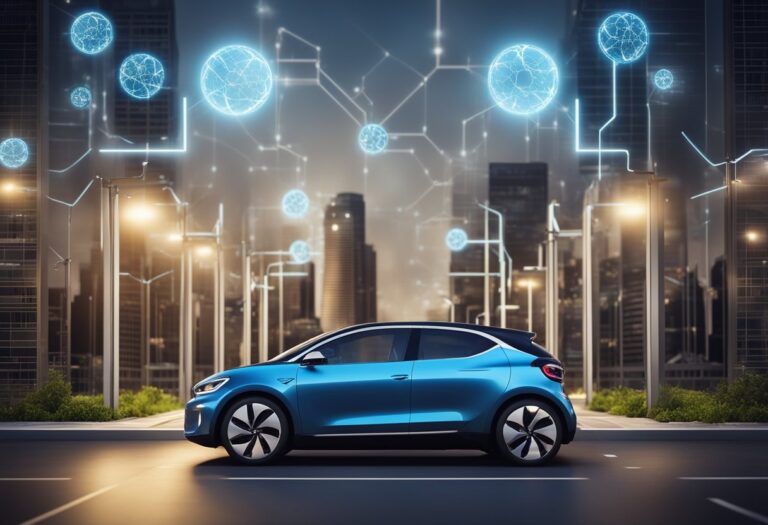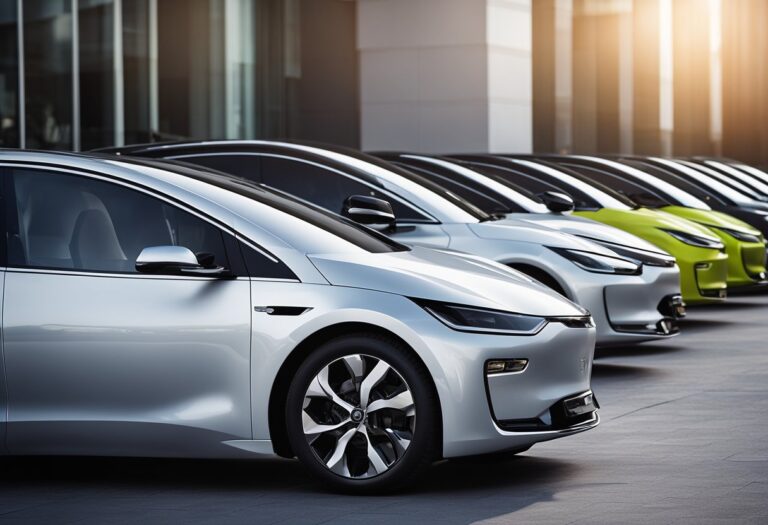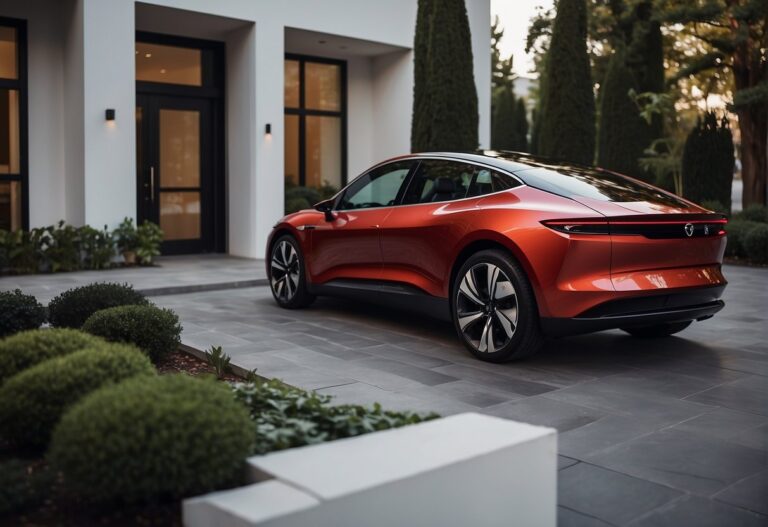Vehicle-to-grid (V2G) technology is a revolutionary concept that empowers electric car owners to not only charge their vehicles but also use them as a source of energy for the grid. This technology is gaining momentum as more people turn to electric cars to reduce their carbon footprint and save money on fuel costs. With V2G technology, electric car owners can help to stabilize the grid and reduce their energy bills.
The concept of V2G technology is simple. When electric cars are plugged into the grid, they can be used to store energy during off-peak hours and then feed it back into the grid during peak demand periods. This allows electric car owners to earn money by selling the energy stored in their car’s battery back to the grid. This not only helps to reduce the demand for fossil fuels but also helps to stabilize the grid by providing a reliable source of energy.
Electric cars are becoming more popular as people look for ways to reduce their carbon footprint and save money on fuel costs. With V2G technology, electric car owners can take advantage of their vehicles’ battery storage capacity to help stabilize the grid and earn money. This technology is still in its infancy, but it has the potential to transform the energy industry and reduce our reliance on fossil fuels.
Understanding Vehicle-to-Grid (V2G) Technology
Vehicle-to-Grid (V2G) technology is a bi-directional charging system that enables electric vehicles (EVs) to feed energy back into the power grid. The technology allows EV owners to not only charge their vehicles but also to sell excess energy back to the grid. V2G technology is a game-changer for the EV industry as it empowers EV owners to become energy producers and contribute to the stability of the power grid.
The Basics of V2G
V2G technology works by using the battery of an EV to store and release energy to the grid. During peak hours, when the demand for electricity is high, the grid can draw energy from the EVs that are connected to it. Conversely, during off-peak hours, when the demand for electricity is low, the grid can supply energy to the EVs.
V2G technology is a win-win for both EV owners and the power grid. EV owners can earn money by selling excess energy back to the grid, while the grid can use the energy stored in the EVs to meet peak demand and stabilize the grid.
V2G and Renewable Energy Integration
V2G technology is a key player in the integration of renewable energy into the power grid. As more solar and wind energy is added to the grid, the need for energy storage solutions becomes increasingly important. V2G technology can help to balance the intermittent nature of renewable energy by storing excess energy during times of low demand and releasing it during times of high demand.
Key Players in V2G Development
Several automakers have been at the forefront of V2G development. Nissan was one of the first companies to introduce V2G technology, and Volkswagen has also made significant strides in the development of V2G systems. Tesla has also been exploring the potential of V2G technology and has included it as a feature in some of its vehicles.
In addition to automakers, several companies are developing V2G technology, including energy storage companies and utilities. These companies are working to develop the infrastructure needed to support V2G technology and to integrate it into the power grid.
In conclusion, V2G technology is a game-changing innovation that empowers EV owners to become energy producers and contribute to the stability of the power grid. The technology is a win-win for both EV owners and the power grid, and it plays a key role in the integration of renewable energy into the power grid. With several key players in the development of V2G technology, the future looks bright for this innovative technology.
Benefits and Challenges of V2G for Electric Vehicle Owners
Economic and Grid Benefits
Vehicle-to-grid (V2G) technology empowers electric car owners by allowing them to sell excess energy back to the grid, thereby creating a revenue stream. This can help offset the cost of owning an electric vehicle (EV) and make it more affordable for consumers. Additionally, V2G can help stabilize the power grid by providing a source of energy during peak demand periods, reducing the likelihood of power outages.
Managing Power Demand and Supply
V2G also allows for better management of power demand and supply. During times of high demand, EVs can be used to supplement the grid, while during times of low demand, EVs can be charged using excess energy from the grid. This can help reduce strain on the power grid and improve grid stability.
Battery Life and V2G Impact
However, V2G technology can also have an impact on battery life. The frequent charging and discharging of the battery can cause wear and tear, reducing the overall lifespan of the battery. Additionally, the use of V2G technology may require EV owners to sacrifice some of their vehicle’s range and performance in order to participate in demand response programs.
In summary, V2G technology provides economic and grid benefits for electric vehicle owners, while also presenting challenges related to battery life and range. As the technology continues to develop and improve, it has the potential to play a significant role in the future of the power grid and energy management.
Frequently Asked Questions
What benefits do electric car owners get from V2G technology?
Vehicle-to-grid (V2G) technology allows electric car owners to not only charge their vehicles but also sell excess energy back to the power grid. This means that electric car owners can earn money by participating in V2G programs. Additionally, V2G technology can help reduce the cost of owning an electric car by offsetting the cost of charging.
How does V2G technology impact the overall power grid stability?
V2G technology can improve the overall stability of the power grid by allowing electric cars to act as a distributed energy resource. This means that electric cars can help balance the load on the power grid by providing energy during periods of high demand or by absorbing excess energy during periods of low demand.
Can V2G technology contribute to renewable energy integration?
Yes, V2G technology can contribute to renewable energy integration by allowing electric cars to store excess energy generated by renewable energy sources, such as wind and solar power. This excess energy can then be sold back to the power grid during periods of high demand.
Which electric vehicles are currently compatible with V2G systems?
Currently, there are a limited number of electric vehicles that are compatible with V2G systems. However, some of the electric vehicles that are compatible with V2G systems include the Nissan Leaf, Mitsubishi Outlander PHEV, and BMW i3.
What are the potential financial incentives for participating in a V2G program?
The potential financial incentives for participating in a V2G program include earning money by selling excess energy back to the power grid, reducing the cost of owning an electric car by offsetting the cost of charging, and potentially receiving tax credits or other financial incentives from governments or utilities.
How does V2G technology affect the longevity and health of electric car batteries?
The impact of V2G technology on the longevity and health of electric car batteries is still being studied. However, some studies have suggested that V2G technology may have a negative impact on the longevity and health of electric car batteries due to the increased stress placed on the batteries during charging and discharging cycles.



